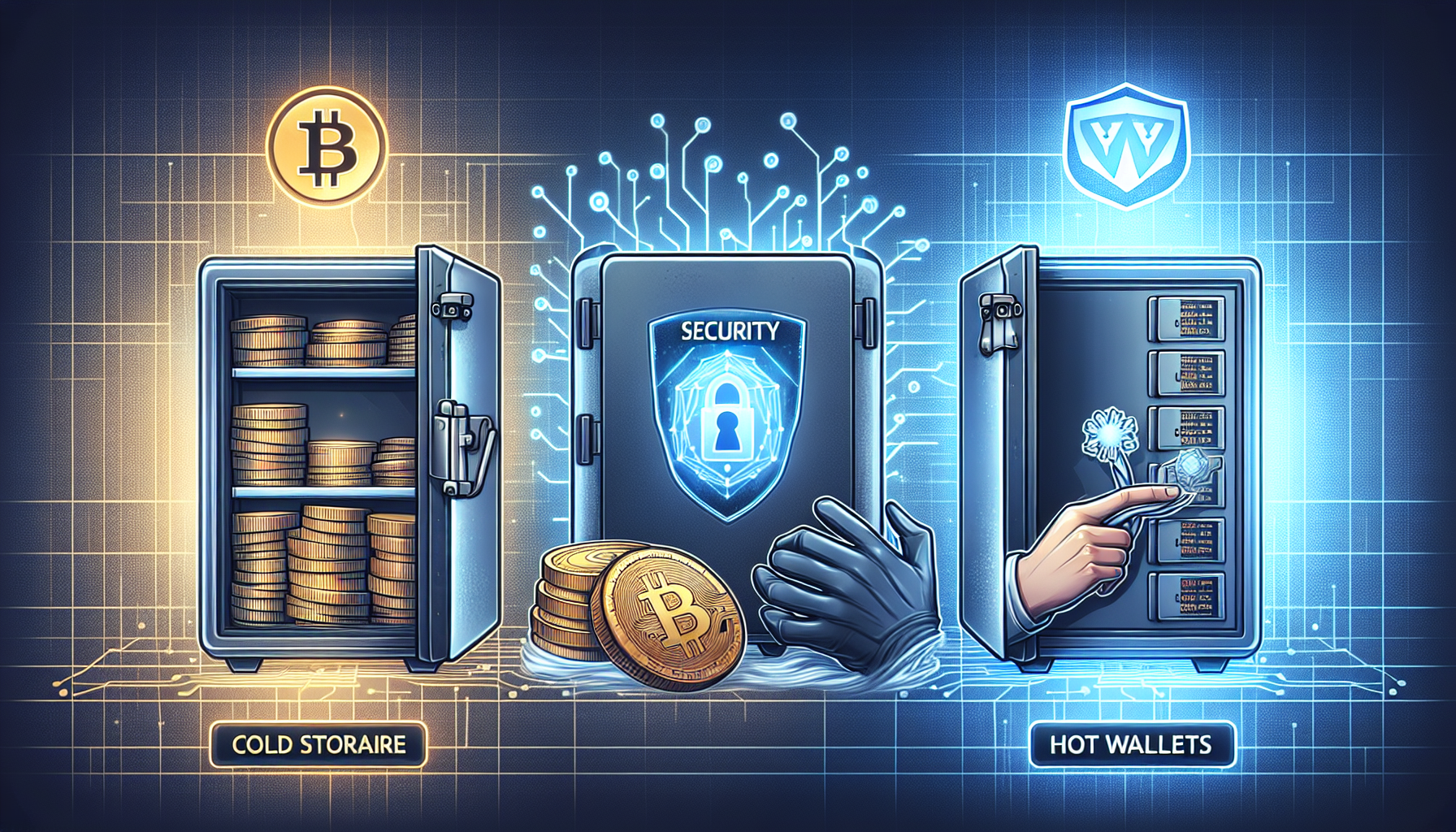Cold Storage vs Hot Wallets: Ultimate Security Comparison for Crypto Investors
Introduction: Why Your Crypto Security Choice Matters
Did you know that over $3.8 billion in cryptocurrency was stolen in 2024 alone, with 80% of breaches targeting hot wallets? Whether you’re trading digital assets daily or holding long-term, understanding cold storage vs hot wallets security differences could save your fortune. Let’s break it down like explaining to your neighbor how to lock a safe versus carrying cash in a backpack.
What Are Hot Wallets? (The “Digital Wallet in Your Pocket”)
Hot wallets are connected to the internet, making them:
- Convenient for frequent transactions (think buying coffee with crypto)
- Vulnerable to hacking – Like leaving your front door unlocked
- Best for small amounts – Experts recommend keeping only 5-10% of holdings here
Example: MetaMask or Coinbase Wallet for daily crypto trading.

Cold Storage Explained (The “Fort Knox” Approach)
Offline storage solutions include:
- Hardware wallets (Ledger/Trezor) – USB devices storing private keys offline
- Paper wallets – Physical printouts of keys (avoid if you’re prone to losing receipts!)
- Air-gapped computers – Never-connected devices for crypto transactions
Security benefit: Reduces hacking risk by 95% compared to hot wallets (Crypto Security Institute, 2025).
Key Security Differences at a Glance
| Factor | Hot Wallets | Cold Storage |
|---|---|---|
| Internet Connection | Always on | Never/rarely |
| Hack Risk | High | Extremely Low |
| Best For | Daily crypto transactions | Long-term cryptocurrency storage |
When to Use Each: Practical Scenarios
Hot Wallets Shine When:
- You’re actively trading altcoins
- Need instant access (e.g., NFT purchases)
- Using decentralized apps (DeFi protocols)
Cold Storage Wins For:
- Safeguarding Bitcoin for 5+ years
- Storing inheritance crypto assets
- Large holdings (anything above $10,000)
Hybrid Approach: The Smart Investor’s Strategy
Most security experts recommend:
- Keep 90% in cold storage
- Maintain 10% in hot wallets for liquidity
- Use multi-signature wallets for added protection
Pro tip: The Ledger Nano X hardware wallet supports Bluetooth for occasional connectivity while maintaining cold storage benefits.
Conclusion: Secure Your Crypto Like a Pro
Choosing between cold storage vs hot wallets isn’t about right or wrong – it’s about matching security levels to your cryptocurrency usage patterns. Remember:
- Hot wallets = convenience with risk
- Cold storage = maximum security with less flexibility
For step-by-step guides on setting up your ideal security system, explore CryptoSaviours‘ wallet security resources.
Disclaimer: Cryptocurrency regulations vary by jurisdiction. Consult local laws before implementing storage solutions.
CryptoSaviours – Your trusted partner in blockchain security education since 2018.
About the Author:
Dr. Elena Rodriguez
Published 27 papers on cryptographic security
Lead auditor for the Ethereum 2.0 transition security framework


